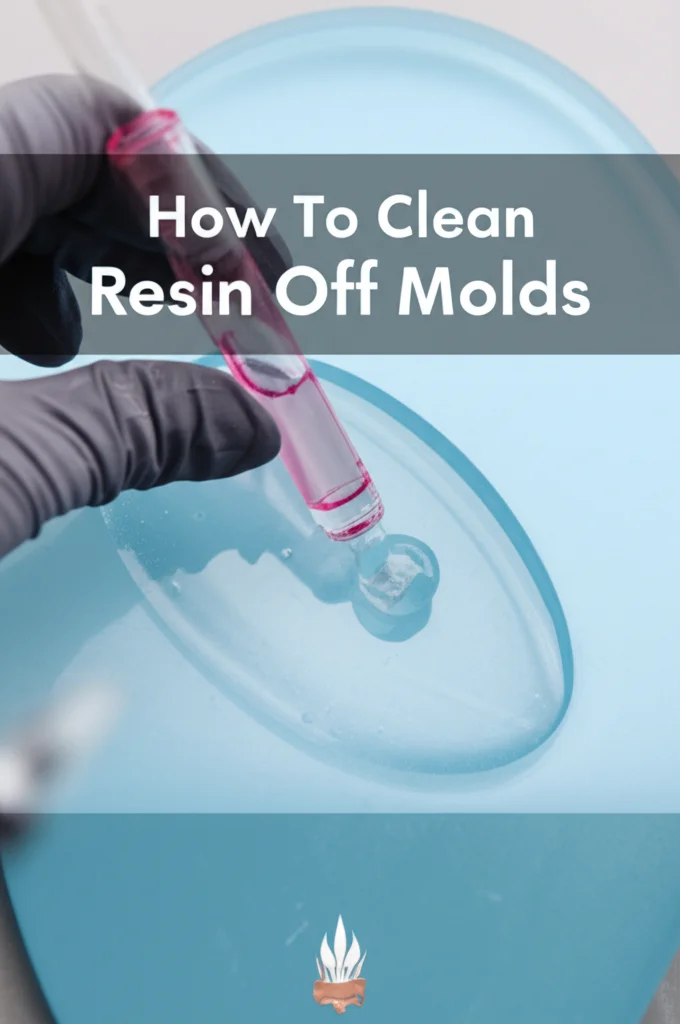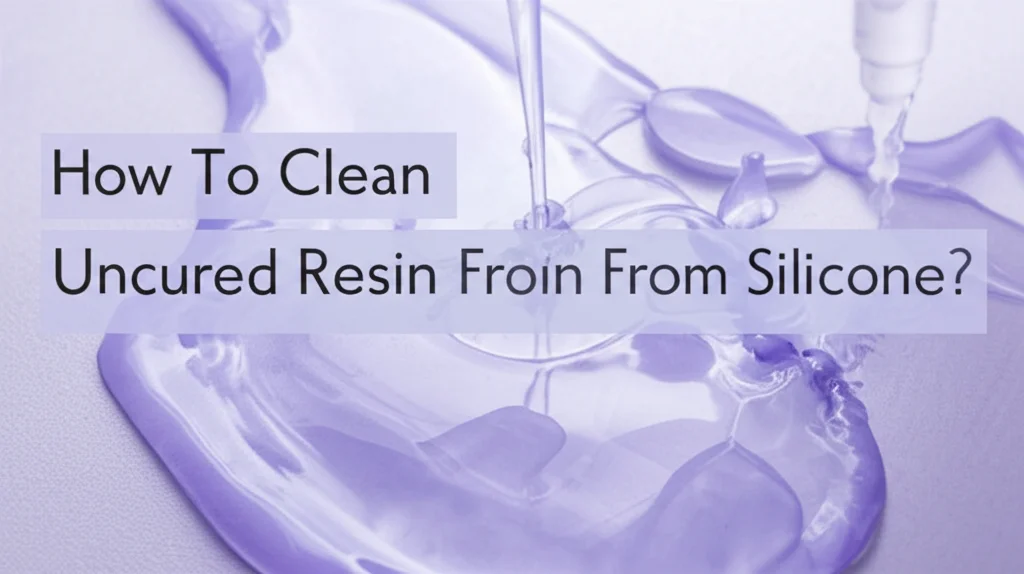· DIY & Crafts · 6 min read
How To Clean Resin Off Molds

How To Clean Resin Off Molds: A Comprehensive Guide
Ever poured resin into a mold, created something beautiful, and then dreaded the cleanup? You’re not alone! Cleaning resin off molds is a crucial step for successful resin crafting, ensuring your next project comes out flawlessly. This article will walk you through everything you need to know about how to clean resin off molds, from the best tools and solutions to preventative measures. We’ll cover techniques for silicone, plastic, and even more challenging mold materials. Let’s dive in and make mold cleaning a breeze!
Takeaway:
- Use isopropyl alcohol for most resin types and silicone molds.
- Mold release sprays prevent sticking and make cleaning easier.
- Gentle scraping with a plastic tool can help remove stubborn resin.
- Proper mold care extends the life of your molds and improves results.
Quick Answer:
To clean resin off molds, typically isopropyl alcohol (91% or higher) is the most effective solution. Simply soak the mold in alcohol, then gently flex and peel away the remaining resin. For stubborn areas, use a plastic scraper and repeat the process.
Why Cleaning Resin Molds is Important
Cleaning your resin molds isn’t just about aesthetics; it’s about the quality of your future casts. Resin left in the mold can contaminate subsequent pours, leading to imperfections like bubbles, cloudiness, or even a failed cure. A clean mold ensures a smooth, flawless finish every time. Plus, properly maintained molds last longer, saving you money in the long run. Think of it as an investment in your crafting success! Ignoring this step can lead to frustration and wasted materials.
Choosing the Right Cleaning Solution
The best cleaning solution depends on the type of resin you’re using and the mold material. Here’s a breakdown:
- Isopropyl Alcohol (IPA): This is the go-to for most epoxy resins and silicone molds. It effectively dissolves uncured resin without damaging the mold. Aim for 91% or higher concentration for best results.
- Acetone: While effective, acetone can damage some silicone molds, so test it in an inconspicuous area first. It’s best suited for plastic molds that are acetone-resistant.
- Mold Release Spray: This isn’t a cleaner, but a preventative measure. Applying mold release before pouring resin makes cleanup significantly easier.
- Warm Soapy Water: For water-based resins, warm soapy water can be sufficient. However, ensure the mold is completely dry before using it again.
- Specialized Resin Cleaners: Some companies offer cleaners specifically formulated for resin molds. These can be a good option for particularly stubborn residue.
Cleaning Silicone Molds: The Gentle Approach
Silicone molds are the most popular choice for resin casting due to their flexibility and ease of use. However, resin can still stick, so proper cleaning is essential. Here’s how to do it:
- Soaking: Submerge the silicone mold in isopropyl alcohol for 15-30 minutes. This softens the resin, making it easier to remove.
- Flexing and Peeling: Gently flex the mold and peel away the resin. Avoid using sharp objects, as they can tear the silicone.
- Stubborn Residue: For stubborn areas, use a plastic scraper or a soft-bristled brush dipped in isopropyl alcohol.
- Final Rinse: Rinse the mold with clean isopropyl alcohol and allow it to air dry completely before using it again.
- Pro Tip: If you’re using a detailed mold, consider using a cotton swab dipped in alcohol to reach tight spaces.
Cleaning Plastic Molds: A Bit More Caution
Plastic molds are less flexible than silicone, so you need to be more careful when cleaning them. Here’s a guide:
- Acetone Test: Before using acetone, test it on a small, hidden area of the mold to ensure it doesn’t cause damage.
- Isopropyl Alcohol First: Start with isopropyl alcohol, as it’s generally safer for plastic.
- Gentle Scraping: Use a plastic scraper to carefully remove the resin. Avoid excessive force, as this can scratch or break the mold.
- Warm Soapy Water: If the resin is particularly stubborn, try warm soapy water after using alcohol.
- Thorough Drying: Ensure the mold is completely dry before using it again to prevent water spots or cloudiness. You can use a microfiber cloth to help with this.
Preventing Resin Sticking: Mold Release is Your Friend
The best way to clean resin off molds is to prevent it from sticking in the first place! Mold release sprays create a barrier between the resin and the mold, allowing for easy demolding.
- Types of Mold Release: There are several types available, including silicone-based sprays and water-based solutions.
- Application: Apply a thin, even coat of mold release to the inside of the mold before pouring the resin.
- Drying Time: Allow the mold release to dry completely before pouring the resin.
- Reapplication: Reapply mold release after each cleaning to maintain its effectiveness. Using a mold release spray can significantly extend the life of your molds.
Dealing with Cured Resin: When Things Get Tricky
Sometimes, resin cures inside the mold before you have a chance to clean it. This can be more challenging, but not impossible.
- Freezing: Place the mold in the freezer for 30-60 minutes. This can make the cured resin brittle and easier to break apart.
- Heat (with Caution): Gently warming the mold with a hairdryer can soften the resin, but be careful not to overheat it, especially with silicone molds.
- Patience and Persistence: Removing cured resin requires patience and persistence. Work slowly and carefully to avoid damaging the mold.
- Consider Replacement: If the cured resin is deeply embedded and impossible to remove without damaging the mold, it might be time to replace it.
FAQ: Your Resin Mold Cleaning Questions Answered
- Can I use hand sanitizer to clean resin molds? While hand sanitizer contains alcohol, it often has additives that can leave a residue on the mold. Isopropyl alcohol is a better choice.
- How often should I clean my resin molds? Clean your molds after every pour to prevent resin buildup and contamination.
- Can I reuse resin that I’ve scraped off the mold? It’s generally not recommended to reuse scraped-off resin, as it may contain contaminants and not cure properly.
- What if my silicone mold is still sticky after cleaning? The mold may not be completely clean. Repeat the cleaning process with fresh isopropyl alcohol, and consider using a mold release spray for your next pour.
- Is it okay to wash resin molds in the dishwasher? Avoid using the dishwasher, as the high heat can damage the molds. Hand washing is always the best option.
- How do I store my resin molds after cleaning? Store your molds in a clean, dry place, away from direct sunlight and dust. A plastic container or resealable bag works well.
Conclusion: Keep Your Molds Clean for Resin Success
Cleaning resin off molds is a vital part of the resin crafting process. By following these tips and choosing the right cleaning solutions, you can ensure your molds stay in top condition, delivering flawless results with every pour. Remember, prevention is key – using a mold release spray can save you a lot of time and effort in the long run. So, embrace the cleaning process, and enjoy the beautiful creations that come from well-maintained molds! Don’t let a little resin residue stand between you and your next masterpiece.
- resin molds
- cleaning resin
- mold release
- epoxy resin
- silicone molds




